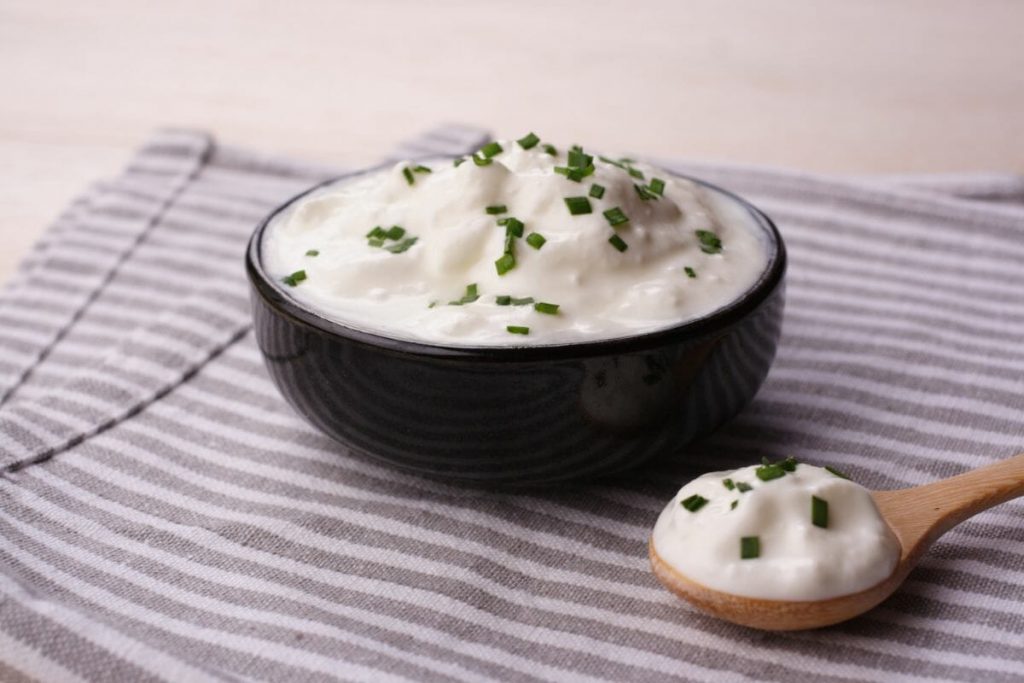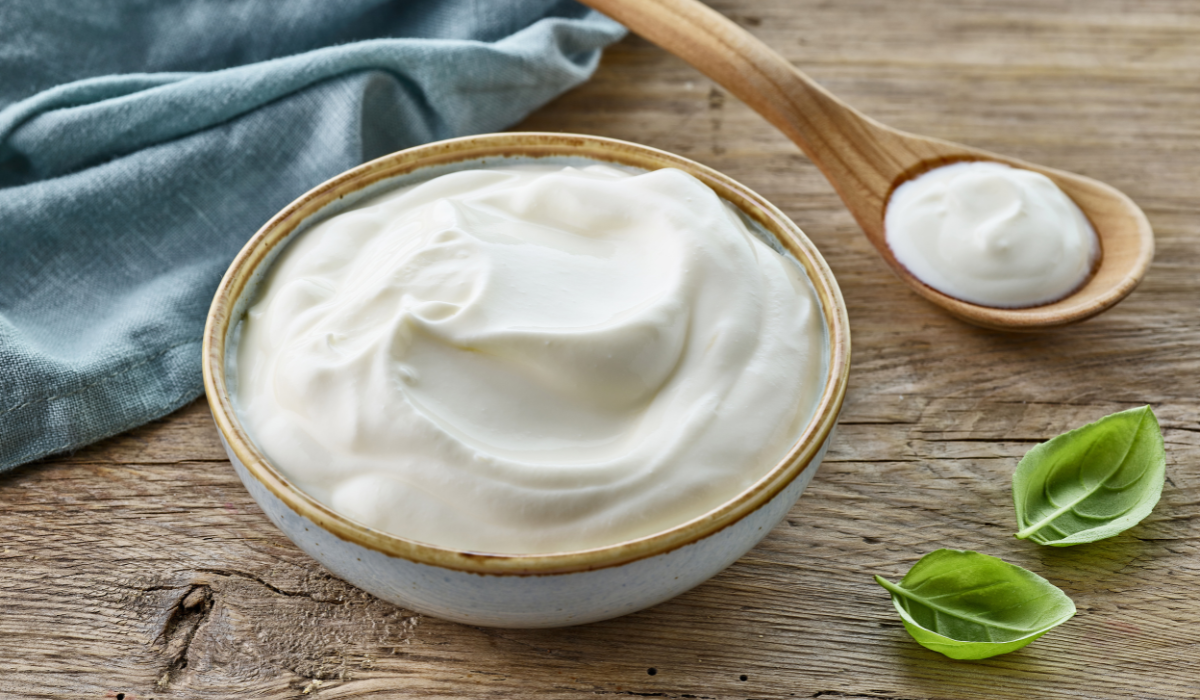Even when stored in the fridge, bacteria and mold may begin to form over time – which could potentially make you sick if eaten.
There are various indicators that your sour cream has gone bad and needs to be discarded, most notably an unpleasant or rancid aroma which indicates it should be.
Smell
If the sour cream smells unusual or off, it is best to discard it immediately. Dairy products in general will take on an off-putting odor when going bad due to good bacteria (Luconostoc citrovorum and Streptococcus lactis) dying off at room temperature and being replaced by harmful microorganisms that can lead to illness if eaten.
Un sour cream container left at room temperature can become contaminated with bacteria and mold from dirty utensils, food particles in the air or leftover food from your refrigerator if left out for too long. Therefore, it is wise to store sour cream in the fridge when not in use and use clean utensils when handling it.
Dependent upon how long it has been sitting out, sour cream may develop a watery layer on top. This indicates it has gone bad and should no longer be eaten.
You may notice that your sour cream has changed color; fresh sour cream should typically be white, while its color can change to yellow, pink or greenish if it has gone bad – these changes indicate bacterial growth which could potentially make you sick if consumed.
As another way of testing whether your sour cream has gone bad, taste is an effective indicator. Fresh sour cream should have a pleasant, mild sour flavor; any time there’s an unpleasant tang or harsh sharp sour flavor present it should be discarded; same goes for anything funky bitter or off tasting that could indicate spoilage.
Color
Sour cream may become subpar if left sitting out too long after its expiration date has passed, exposed to heat or light, or has experienced any type of abuse like frequent stirring. You can tell if a tub of sour cream has gone bad by its color and smell: If there’s any off odor present or mold has begun growing on top, discard immediately!
Usually sour cream that has changed to yellow or grayish in color indicates it is no longer fresh and should be discarded immediately. If its creamy texture has turned watery due to bacteria or fungus growth. If it turns green or pink in hue, discard immediately!
All these indicators suggest that your sour cream has gone bad and should be discarded immediately. Consuming expired or spoilt sour cream could cause food poisoning symptoms like stomachaches, nausea, diarrhea and vomiting as well as even potentially being fatal in extreme cases.
Refrigerating sour cream at all times will ensure its safe consumption and prevent its spoilage. In order to minimize contamination by bacteria and fungus growth in its storage environment, using clean utensils when handling it may also help avoid quicker spoilage times.

Texture
Sour cream is one of those fridge staples that is susceptible to spoilage. Left out for too long, it may become watery and smell foul; if this occurs or if strange odors arise or an unappetizing appearance occurs then it is time for replacement sour cream purchase.
Sour cream is typically prepared from pasteurized milk, yet still contains live bacteria which provide its tangy flavor. Once spoilage occurs, these bacteria multiply rapidly, producing lactic acid which has an off-flavor that’s no good for us.
Another indicator that your sour cream has become unfit for consumption is when it develops mold or other types of fungi on its surface, as these will impact its flavor as well as potentially being dangerous to consume. You can also tell it has gone bad by noting its off-flavor or chemical taste.
Your sour cream may have taken on a strange hue recently. This could be caused by bacteria infesting it or contamination. Yellow, pink and blue colors could result from this situation; as soon as this occurs it should be discarded immediately as it will no longer be safe to consume.
Though less common, sour cream can sometimes become lumpy or watery due to bacterial growth. This makes it harder to blend into recipes and can result in an odd texture that’s unpleasant to consume. If your sour cream appears lumpy or has changed color significantly, discard it immediately!
Use of expired sour cream can result in stomach cramps, nausea and diarrhea if it has gone bad. In such an instance, see your physician immediately to avoid food poisoning which often starts within hours after consumption with symptoms such as vomiting and diarrhea arising rapidly; expired sour cream should always be discarded when it begins to spoil so to ensure safety, purchase only those marked as “sell by” or “best used by” dates for storage in your fridge as soon as it arrives home from purchase.
Expiration Date
As with other dairy products, sour cream can spoil quickly; therefore, it is crucial that its expiration date be closely monitored in order to avoid potential health hazards. Once past its date of expiration, any remaining sour cream must be disposed of promptly to protect one’s own wellbeing and ensure no potential health concerns arise.
An expiration date will be marked on sour cream packages under “best by” or “use by.” However, this does not indicate how long it will remain safe to consume once opened – in fact it may remain safe up to two weeks past this date when refrigerated properly.
Additionally to checking its expiration date, pay attention to both its color and texture when inspecting sour cream. If it has turned brown or developed an unusual odor, this is likely spoiled and should be thrown out immediately. As it goes bad, its texture changes too – becoming watery and less dense over time.
When storing sour cream in the refrigerator, it is crucial that it reaches an ideal temperature of 40 degrees Fahrenheit in order to delay spoilage and ensure longer shelf life. Furthermore, it’s crucial that only clean utensils be used when scooping it out from its container so as to avoid bacteria contaminating its content.
When in doubt, it’s best to discard any sour cream that has been sitting out on the counter for more than two hours. After sitting between 40-140 degrees Fahrenheit for that amount of time, bacteria may form that could make you sick when consumed. Even when stored properly in the fridge, older products could contain potentially hazardous bacteria which may still make you ill if consumed.

